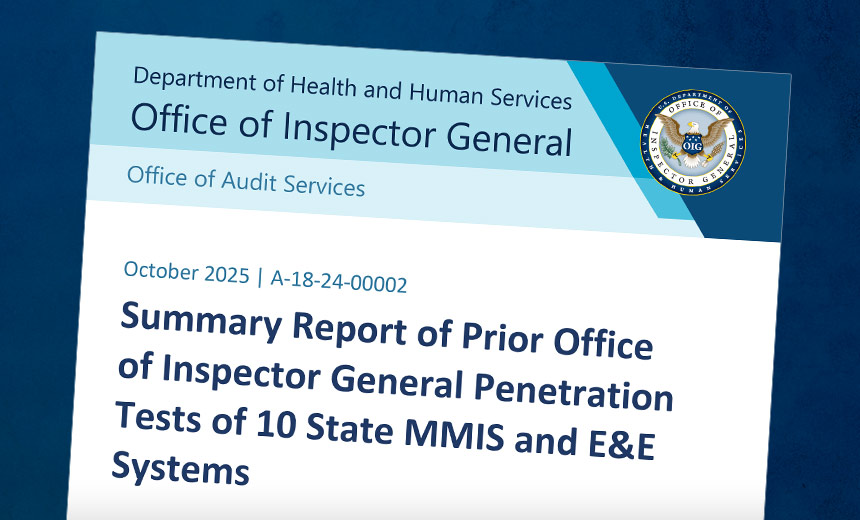Governance & Risk Management
,
Healthcare
,
Industry Specific
Penetration Testing Reveals Vulnerabilities in State Medicaid Systems

A recent penetration testing exercise conducted on ten Medicaid management and enrollment systems has revealed that while nine states and one territory have established generally effective security measures for basic cyber threats, they remain vulnerable to advanced attacks. The findings emphasize the urgent need for enhancements in cybersecurity practices across these platforms.
This assessment stems from a new report released by the U.S. Department of Health and Human Services’ Office of Inspector General, which carried out the penetration tests from 2020 to 2022. The review focused on the Medicaid Management Information Systems (MMIS) and Eligibility and Enrollment (E&E) systems of nine states along with Puerto Rico, aiming to evaluate their resilience against potential cyber threats.
The report highlights a growing trend of cybercriminals targeting healthcare systems due to the sensitive information these platforms manage. It notes an alarming rise in ransomware, phishing, and denial-of-service attacks that pose substantial risks to critical healthcare infrastructure.
From 2012 to 2023, at least six states—South Carolina, Illinois, Maine, Utah, Iowa, and Texas—have reported significant breaches associated with Medicaid data, underscoring the pressing need for stronger defenses. The largest breach, which occurred in Texas in 2021, impacted 1.8 million individuals.
The evaluated jurisdictions for this report included Alabama, Illinois, Maryland, Massachusetts, Michigan, Minnesota, South Carolina, South Dakota, Utah, and Puerto Rico. Although the states managed to respond to some simulated cyberattacks effectively, gaps in their defenses make them susceptible to a broader range of cyber threats.
The Office of Inspector General indicated that the attacks simulated during the tests would likely require a moderate to advanced level of sophistication to exploit the vulnerabilities in the audited state systems. The testing was performed by an external contractor adhering to widely accepted government auditing standards, ensuring a rigorous and impartial analysis.
Examining various criteria, such as compliance with IT security control requirements and the effectiveness of existing security measures, the Office of Inspector General discovered significant weaknesses. Key areas of concern revolved around inadequate controls for confidentiality during data transmission, flawed software remediation processes, insufficient validation of input data, and ineffective error handling protocols that might expose crucial information to potential attackers.
The report concludes that lax security measures within certain state MMIS and E&E systems could enable malicious actors to exploit identified vulnerabilities, seize sensitive data, and evade detection. An effective cybersecurity posture is critical to reducing the likelihood of successful cyberattacks and unauthorized access to sensitive information.
In total, 27 recommendations were issued to the nine states and Puerto Rico, urging them to fortify their security measures. Recommendations included updating software systems, enhancing vulnerability detection tools, enforcing secure coding practices, conducting routine security evaluations, and refining vulnerability management strategies. As of May, approximately half of these recommendations were reported to have been implemented by the states involved, reflecting a commitment to strengthening their cybersecurity defenses.
